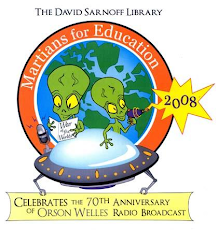What: An Illustrated Lecture (free!)
When: Wednesday, June 15, 7:30 pm
Where: Sarnoff Corporation Auditorium, 201 Washington Road, Princeton
Who: Alex Magoun, Ph.D., executive director of the David Sarnoff Library
Why: The Library’s contribution to the CelebrateNJ! festival in June
Color television, transistors, computers, video cameras, liquid crystal displays (LCDs)—these technologies all shape how people live and communicate around the world. They also share a common origin, here at Princeton's RCA Laboratories. Guided by Alex Magoun, executive director of the David Sarnoff Library and author of the Arcadia Books photohistory of the Labs, take a tour of the stories of their invention and innovation, focusing on the human factors that shaped their development at one uniquely innovative company.
“Three generations of engineers and scientists have created a rich and unique history of world-changing innovation that runs right into the present,” says Magoun. "This talk skims the surface of a well of creativity matched only by Thomas Edison. It may also connect you with your neighbor, or your neighbor’s parents, or grandparents.”
“Five Princeton Inventions” offers a useful source of local history, and an introduction to issues that innovators confront today. A condensation of Dr. Magoun’s popular Princeton Adult School class last fall, this illustrated lecture offers the same mix of education with dashes of entertainment. Magoun explains the roles that inventive styles, funding sources, corporate priorities, inventors elsewhere, commercial rivalries, and government involvement all have on the process by which inventors, entrepreneurs, and consumers improve our lives.
Doors will open at 7 pm and visitors can see the inventions discussed in the David Sarnoff Library before and after the lecture. Refreshments will be served. Call (609) 734-2636 for more information, and visit davidsarnoff.org for directions.
This lecture is made possible in part through a general operating support grant from the New Jersey Historical Commission, Department of State.
Thursday, June 02, 2005
Subscribe to:
Post Comments (Atom)



No comments:
Post a Comment